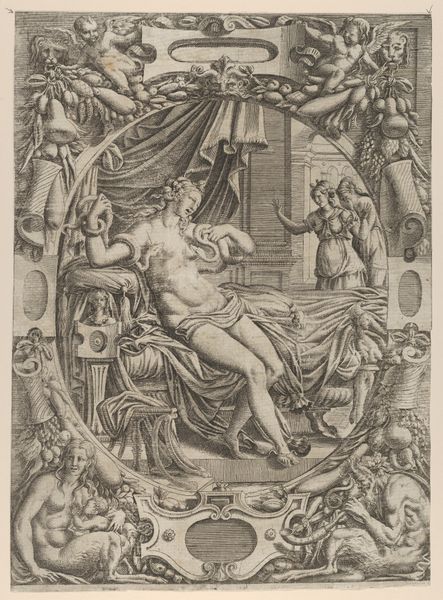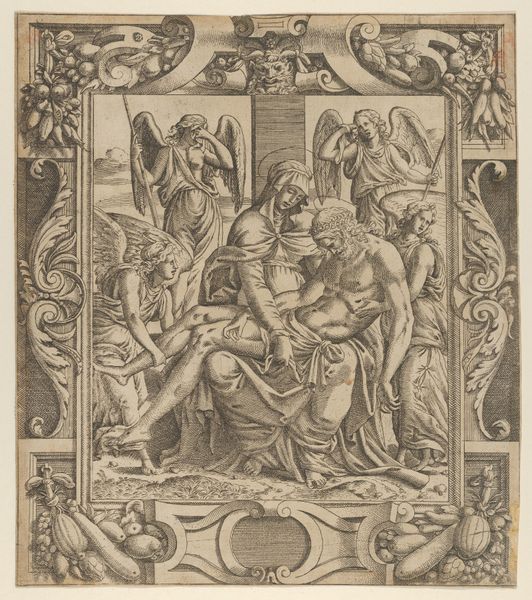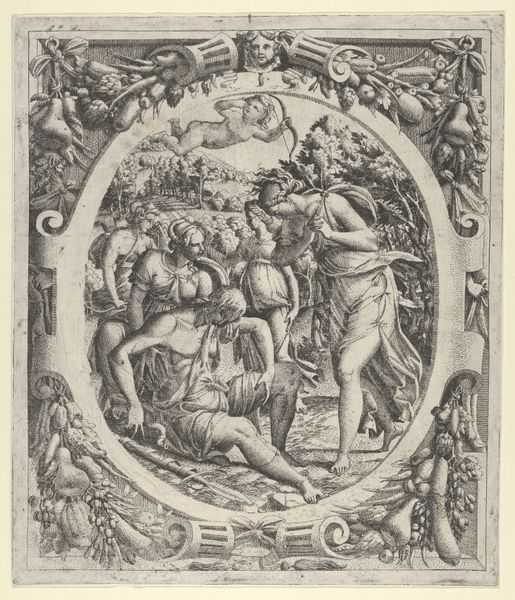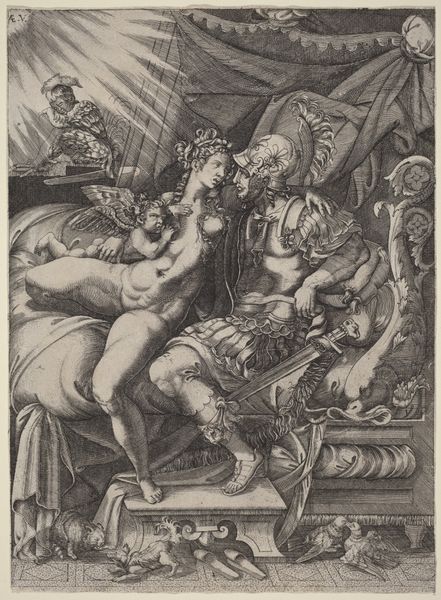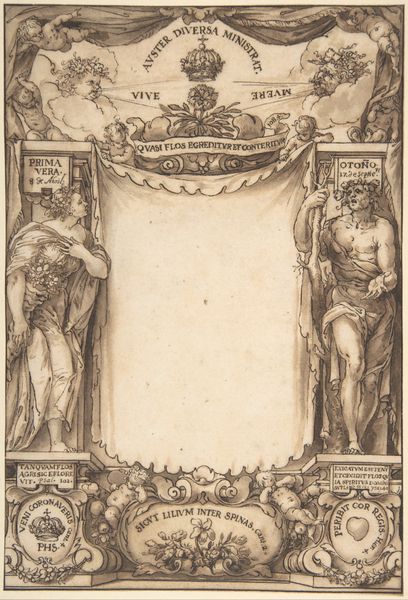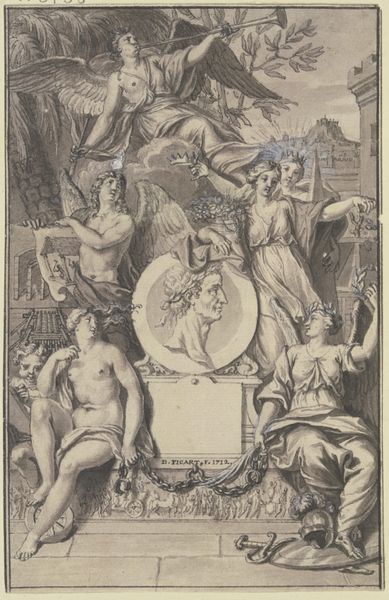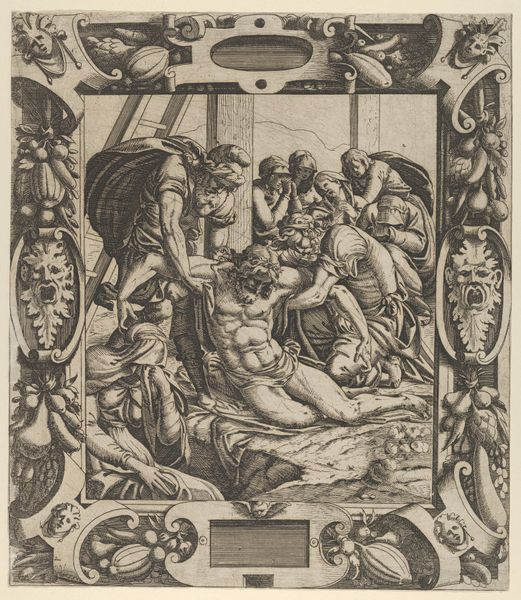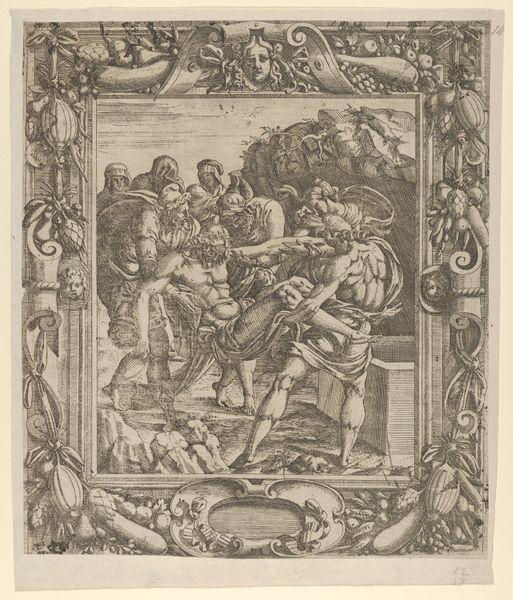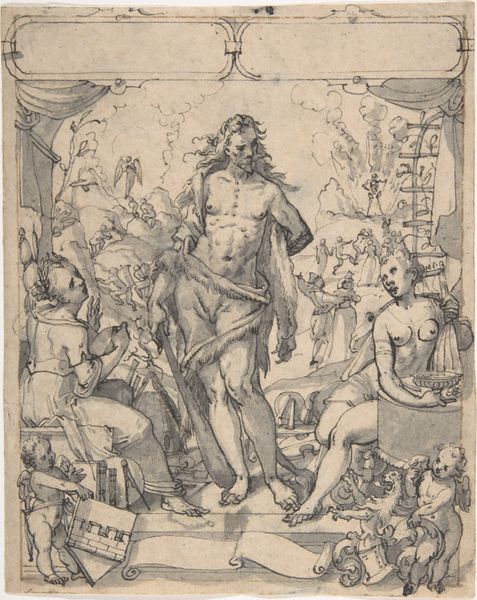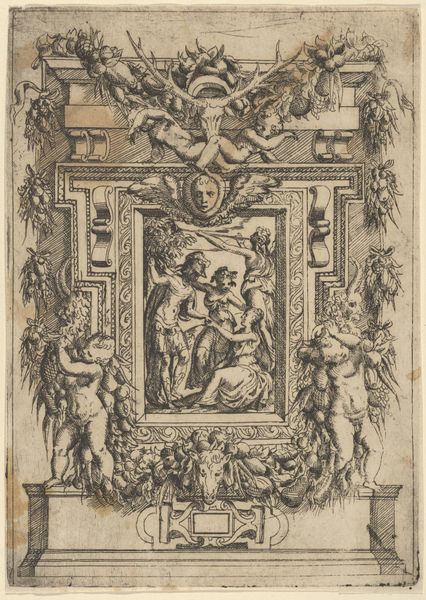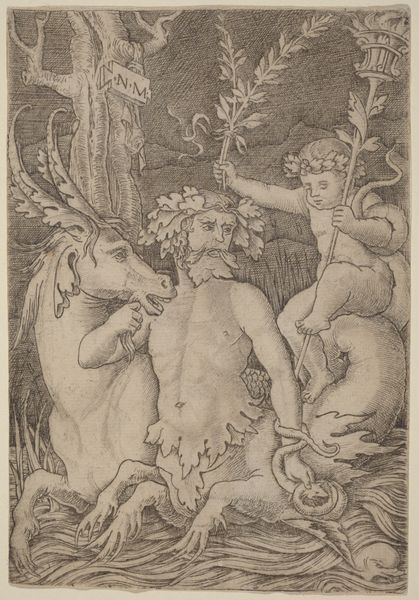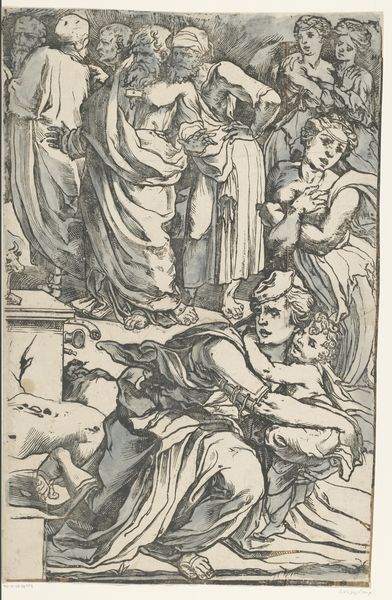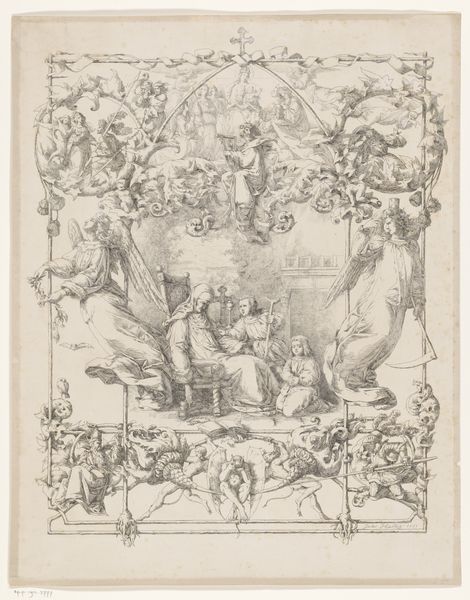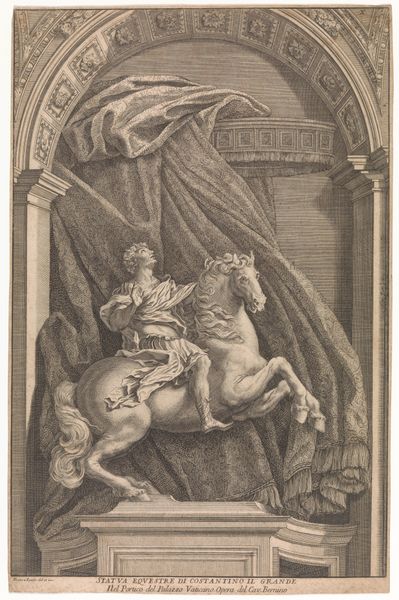
drawing, print
#
drawing
#
allegory
#
baroque
# print
#
figuration
#
line
Dimensions: 10-13/16 x 7-1/8 in. (27.5 x 18.1 cm)
Copyright: Public Domain
Curator: Wow, there's so much going on! It feels like a stage, a very baroque, very dramatic stage. Editor: Indeed. This is a “Design for a Frontispiece: Mercury and Fame,” a drawing rendered around 1650 by Francisco Rizi. The piece finds its home now here at The Met. The execution is predominantly line-based, indicative of a print study. Curator: Mercury and Fame, huh? I see them both. Mercury looks a bit unsteady on that globe, almost like he's about to take a tumble. And Fame, with her laurel wreath, is giving me very regal vibes. Does anyone know who this book was eventually for? Editor: The purpose of a frontispiece in a book is manifold; structurally, it is the first pictorial engagement a reader has with the book. Formally speaking, the winged cherubim and trumpet allude to Renaissance tropes of invenzione. Compositionally, the figures of Mercury and Fame meet just left of center in an embrace—an invitation for the reader to approach a narrative about how deeds bring fame and legacy. Curator: I guess that's Baroque drama for you – over the top, sure, but incredibly thought out and beautiful. Plus, I always feel there is a slightly playful wink in such art. All the flourishes make me think of stage design, those curly ornaments in the lower part just seem ready for a grand opera. Editor: It’s noteworthy how the blank cartouche awaits text—Rizi furnishes us the iconography to herald what is written, but the literal deeds and declarations are beyond the scope of his draftsmanship here. He's outlining, quite literally, where the magic *could* happen. Curator: It's like the picture is setting the mood before you even read a word, preparing you for something grand and meaningful, or simply something utterly theatrical. Either way, it definitely feels like an exciting invitation. Editor: Precisely. So, what do we do with such images today, bereft of a book needing adornment? They serve as a poignant lens for interpreting art, revealing cultural nuances and shedding light on the book's journey. They teach us, too, to appreciate the intricacies within artworks. Curator: It's kind of nice in a way, letting it stand on its own, without the actual text… a free-floating invitation. Editor: Absolutely. Each era leaves its imprint, and art serves as the looking glass through which these impressions can be observed. Thank you.
Comments
No comments
Be the first to comment and join the conversation on the ultimate creative platform.
